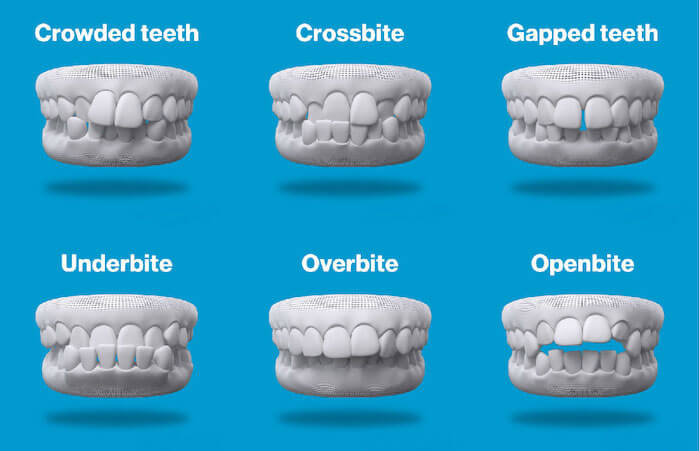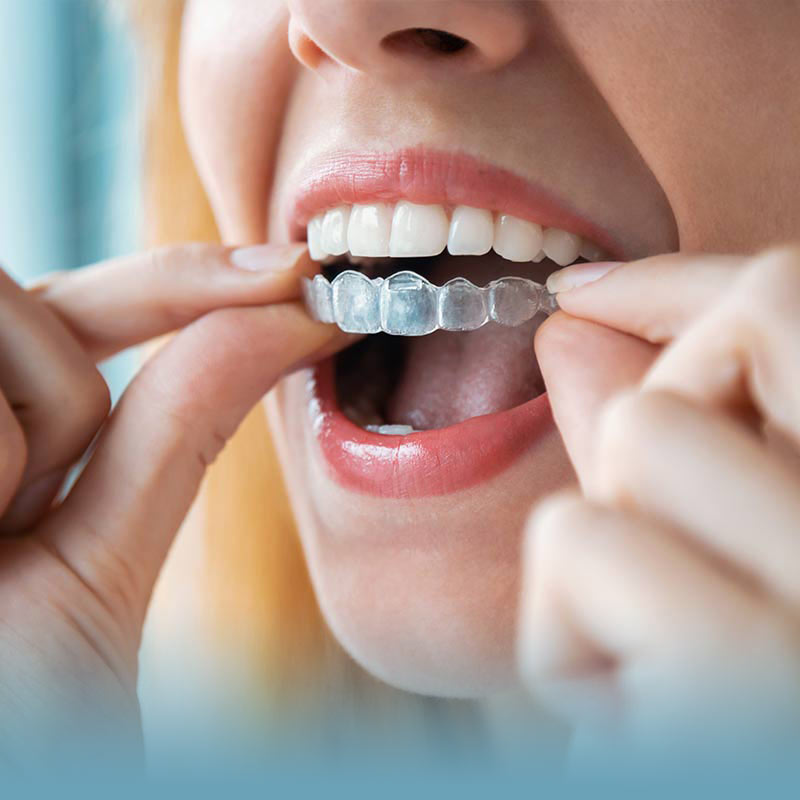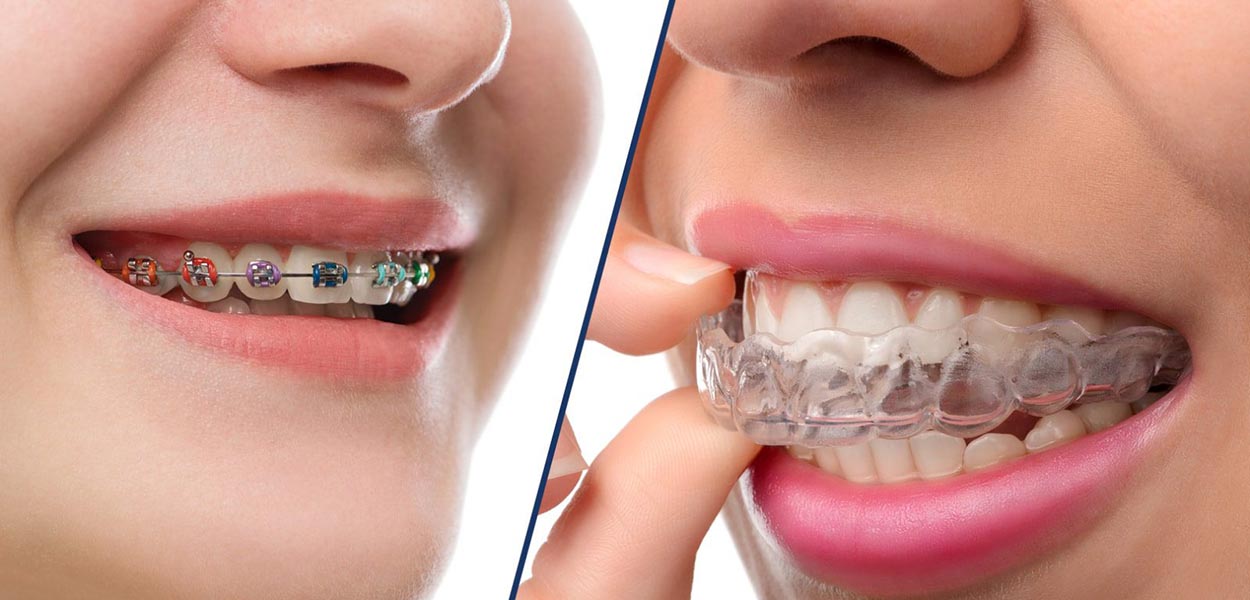The Ultimate Contrast: Invisalign vs. Traditional Braces for Grownups
The Ultimate Contrast: Invisalign vs. Traditional Braces for Grownups
Blog Article
Invisalign vs. Conventional Dental braces: Which Option Is Right for You?
When thinking about orthodontic therapy, the selection between Invisalign and traditional braces provides several important aspects that merit mindful analysis. Invisalign provides a very discreet option with removable aligners, while traditional dental braces offer an extra noticeable yet efficient solution for extreme misalignment. Each choice encompasses distinctive advantages and drawbacks related to appearances, comfort, treatment period, and price. Comprehending these subtleties is crucial for making an educated choice that lines up with your personal choices and way of life. The question remains: which choice will best meet your orthodontic demands and assumptions?
Introduction of Therapy Options

In comparison, traditional dental braces include metal braces and cables that are bonded to the teeth. This technique applies continuous pressure gradually to achieve positioning. While efficient for complicated orthodontic issues, typical dental braces need normal sees for modifications and can present challenges in keeping oral hygiene as a result of the problem of cleansing about braces and cables.
Both alternatives have their advantages, and the option frequently depends upon certain dental problems, way of living choices, and patient conformity. Inevitably, consulting an orthodontic specialist is critical for identifying one of the most ideal therapy plan customized to specific requirements. Recognizing the nuances of each option can dramatically affect the general success of orthodontic therapy.
Aesthetic Factors To Consider
A significant aspect affecting the selection in between Invisalign and standard braces is the aesthetic charm each therapy offers. Invisalign aligners are crafted from clear plastic, making them essentially invisible when worn. This discreet appearance is specifically appealing to adults and teens who might really feel uncomfortable regarding their orthodontic therapy. The capacity to keep an all-natural smile throughout the placement process can significantly improve the client's self-confidence in specialist and social setups.
In contrast, traditional braces contain steel braces and wires, which can be extra visible. While innovations in orthodontic innovation have actually brought about the advancement of smaller braces and colored elastics, traditional braces still keep a more noticeable profile. For some individuals, the presence of braces might prevent them from looking for required treatment.
Ultimately, the option in between Invisalign and typical braces might hinge on individual preferences relating to looks. People that prioritize discernment typically favor Invisalign, while those who are less concerned about presence might go with conventional braces. Understanding the visual ramifications of each alternative is critical for making an informed decision that lines up with one's lifestyle and preferences.
Comfort and Convenience

In regards to benefit, Invisalign aligners are detachable, enabling individuals to appreciate their preferred foods without limitation and preserve ideal dental hygiene. Cleaning More about the author and flossing are simplified, as the aligners can be gotten throughout these routines, whereas conventional dental braces require cautious steering around cords and braces.
In comparison, standard dental braces necessitate routine modifications, making them less hassle-free for those with active schedules. Generally, the convenience and comfort of Invisalign make it an attractive selection for many people seeking orthodontic treatment.
Therapy Period and Performance
While both Invisalign and conventional braces are effective in fixing oral imbalances, the period of therapy can differ dramatically in between the two alternatives. Typically, Invisalign treatment can take anywhere from 12 to 18 months, relying on the complexity of the case. The clear aligners work by progressively shifting teeth right into their wanted placements, and normal follow-ups with an orthodontist help guarantee progress remains on track.
In comparison, conventional dental braces typically need a longer commitment, generally varying from 18 months to 3 years. This is because of their fixed nature and using wires and braces, which can be much more effective for intricate situations and extreme misalignments (Invisalign). The treatment effectiveness of standard braces is well-documented, as they allow for exact adjustments and higher control over tooth motion
Ultimately, the option in between Invisalign and traditional dental braces might rest on both the expected therapy duration and the specific oral issues available. Consulting with an orthodontist is crucial, as they can give tailored referrals based upon private requirements, making certain the picked method straightens with wanted results and durations.
Price Comparison and Insurance Choices
Price plays a substantial function in the decision-making procedure for individuals thinking about orthodontic therapy, whether deciding for Invisalign or traditional dental braces. Usually, the price of Invisalign arrays from $3,000 to $8,000, while typical braces usually set you back between $2,000 and $6,000. Elements affecting these prices include the complexity of the instance, the period of treatment, and geographical location.
Insurance policy protection can dramatically affect out-of-pocket costs. Several oral insurance plans supply partial protection for orthodontic treatments, but the specifics can differ widely. It is critical for individuals to assess their insurance coverage to figure out the extent of insurance coverage for either option. Usually, standard dental braces may be review extra often covered by insurance plans contrasted to Invisalign, which some insurers classify as an aesthetic treatment.
In addition, numerous orthodontic methods supply versatile layaway plan, making both therapy alternatives much more accessible. Individuals should ask about potential financing choices and discount rates for in advance settlements. Assessing the total price, including insurance coverage benefits and settlement plans, is important for making an informed decision that aligns with both aesthetic preferences and budget plan factors to consider.

Final Thought
In summary, the selection in between Invisalign and typical dental braces rests on multiple elements, consisting of visual choices, comfort, treatment period, and cost. Invisalign supplies a discreet, detachable choice that promotes dental health and nutritional adaptability, while typical dental braces might be preferable for complex dental problems and frequently come at a lower rate factor. Eventually, consultation with an orthodontist is crucial to analyze individual situations and establish one of the most appropriate treatment option for accomplishing optimum oral positioning.
When considering orthodontic therapy, the option in between Invisalign and conventional dental braces offers several vital elements that merit cautious evaluation.Comparing Invisalign and standard braces discloses distinct therapy options for orthodontic adjustment.While both Invisalign and typical braces are effective in remedying dental imbalances, the period of treatment can differ considerably in between the 2 choices.Expense plays a significant duty in the decision-making process for individuals taking into consideration orthodontic treatment, whether opting for Invisalign or typical dental braces.In recap, the option between Invisalign and conventional dental braces hinges on multiple variables, including aesthetic choices, comfort, therapy period, and cost.
Report this page